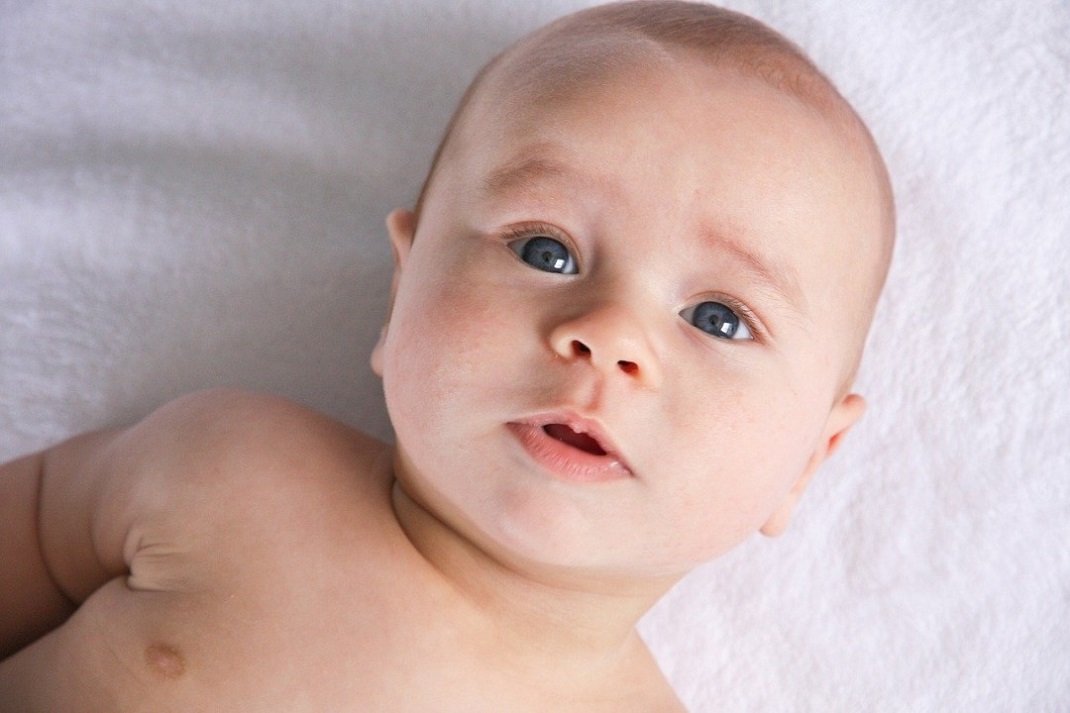

SUMMARY
-
Congenital Muscular Torticollis is a musculoskeletal deformity caused by the abnormal contraction of the sternocleidomastoid muscle.
-
The condition typically presents in infants and children with a persistent head tilt toward the involved side.
-
Diagnosis is made clinically with the presence of a palpable neck mass from a contracted sternocleidomastoid muscle with the chin rotated towards the contralateral side.
-
Treatment is typically passive stretching with the condition resolving within a year. Surgical lengthening of the SCM muscle is indicated with failed response to at least 1 year of stretching.
EPIDEMIOLOGY
-
Incidence
- most common cause of infantile torticollis
-
0.3 - 2.0%
- most common cause of infantile torticollis
-
Demographics
-
3:2 male to female ratio
-
-
Anatomic location
-
neck
-
-
Risk factors
-
oligohydramnios
-
first pregnancy (limited intrauterine space)
-
traumatic delivery
-
breech delivery
-
ETIOLOGY
-
Pathophysiology
-
contracture of the sternocleidomastoid (SCM)
-
cervical rotational deformity with chin rotation away from the affected side and head tilt towards the affected side
-
-
suspected muscle injury from compression and stretching of SCM
-
venous outflow obstruction
-
compression leading to decreased blood supply and subsequent compartment syndrome
-
-
-
Associated conditions
-
associated with other packaging disorders
-
developmental dysplasia of the hip (5 - 15% association)
-
metatarsus adductus
-
calcaneovalgus feet
-
-
plagiocephaly (asymmetric flattening of the skull)
-
occurs on contralateral side
-
-
congenital atlanto-occipital abnormalities
-
ANATOMY
-
Muscles
- sternocleidomastoid muscle (SCM)
-
origins
-
sternal head - anterior surface of manubrium sterni
-
clavicular head - superior surface of medial third of clavicle
-
-
insertions
-
lateral mastoid process on temporal bone
-
lateral occipital bone
-
-
innervation
-
cranial nerve XI - spinal accessory nerve
-
at risk when operatively releasing SCM
-
-
-
function
-
ipsilateral neck flexion, contralateral head rotation
-
-
- sternocleidomastoid muscle (SCM)
PRESENTATION
-
Symptoms
-
head tilt and rotation
-
painless passive motion
-
-
Physical exam
-
inspection
-
palpable neck mass from contracted SCM
-
usually noted within the first four weeks of life or during newborn exam
-
-
head tilt & rotation
-
neck tilt towards the affected SCM
-
chin rotation away from the affected SCM
-
-
conduct routine baby exam
-
assess visual function, auditory assessment, and neurologic exam
-
examine for hip dysplasia, foot deformities, as well as spine abnormalities
-
-
-
motion
-
in older children - restriction of rotation and lateral flexion of neck
-
mass becomes a tight band
-
-
-
IMAGING
-
Radiographs
-
recommended views
-
AP and lateral cervical spine
-
-
indications
-
head tilt and rotation with no palpable mass present
-
rule out other bony conditions that can cause torticollis
-
-
-
CT
-
recommended views
-
dynamic CT scan
-
scan at C1-C2 level with head straight, then in maximum rotation to left and right
-
-
indications
-
rule out atlantoaxial rotatory subluxation
-
-
-
MRI
-
recommended views
-
MRI brain and cervical spine
-
-
indications
-
rule out non-muscular and central causes of torticollis
-
-
-
Ultrasound
-
indications
-
head tilt and rotation with decreased ROM in the presence of a palpable mass
-
-
findings
-
larger and hyperechoic (due to fibrosis) SCM on involved side when compared to contralateral side
-
differentiate congenital muscular torticollis from more serious underlying neurologic or osseous abnormalities
-
-
DIFFERENTIAL
-
Atlantoaxial rotatory subluxation
-
painful (compared to painless for congenital muscular torticollis)
-
post-traumatic or post-infectious (Grisel's disease)
-
-
Klippel-Feil syndrome
-
classic triad:
-
short webbed neck
-
low posterior hairline
-
limited cervical range of motion
-
-
-
Ophthalmologic and vestibular conditions
-
Lesions of central and peripheral nervous system
TREATMENT
-
-
Nonoperative
-
passive stretching
-
indications
-
condition present for less than 1 year
-
less than 30° limitation in ROM
-
-
outcomes
-
90-95% respond to passive stretching in the first year of life
-
-
-
-
Operative
-
bipolar release of SCM or Z-lengthening
-
indications
-
failed response to at least 1 year of stretching
-
-
outcomes
-
good outcomes (92% success), even in older children
-
facial asymmetry can improve as long as release done prior to 10 years of age
-
-
-
-
TECHNIQUES
-
Passive stretching
-
technique
-
opposite of the deformity
-
lateral head tilt away from affected side
-
chin rotation toward the affected side
-
-
-
-
Bipolar release of SCM or Z-lengthening
-
technique
-
short, proximal incision behind the ear to divide SCM
-
single or dual incision to reach sternal and clavicular attachments of SCM
-
-
complications
-
SCM branch of CN XI (spinal accessory nerve) is at risk
-
-
COMPLICATIONS
-
Permanent rotational deformity
-
risk factors
-
left untreated or unnoticed
-
-
-
Positional plagiocephaly
-
risk factors
-
left untreated or unnoticed
-
-
-
Craniofacial deformities
-
facial asymmetry
-
facial hemihypoplasia
-
-
Compensatory scoliosis
PROGNOSIS
-
Typically resolves with stretching within the first year
-
If left untreated
-
permanent rotational deformity
-
positional plagiocephaly
-
craniofacial deformities
-
facial asymmetry
-
facial hemihypoplasia
-
-
compensatory scoliosis
-
